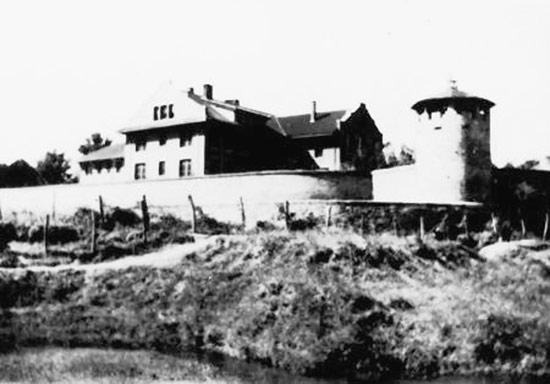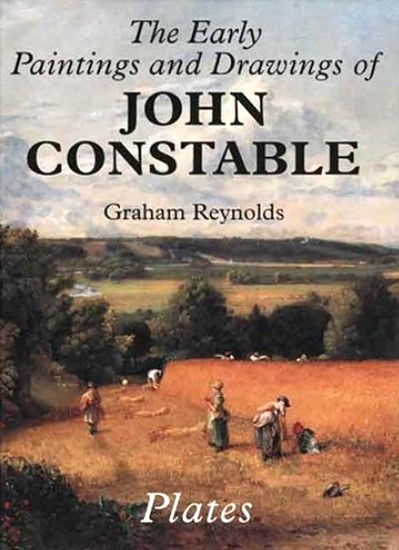|
Katharine Jowett
Katharine Alice Jowett née Wheatley (1883–1972) was a British artist, best known for her cityscapes of Beijing in the early to mid-20th century. Along with Bertha Lum and other émigré European and American artists in China, she was a proponent of the ''shin-hanga'' style of woodcut printing. Mao Zedong was said to have appreciated and collected her art. Early life Jowett was born in Devon in 1883. In her late teens, falling in love with a missionary, she followed him to China. During her sojourn in Hubei and Hunan provinces, she decided that a missionary life didn't suit her and she moved to Beijing where she met and married Hardy Jowett in 1910. For their honeymoon, they took a trip to England via Japan and Canada, a harrowing journey that involved a near shipwreck. Jowett had two sons, Christopher and Edward. Some time after 1920, the family moved back to China where her husband took on the management of the Beijing office of the Asiatic Petroleum Company. In 1930, Christo ... [...More Info...] [...Related Items...] OR: [Wikipedia] [Google] [Baidu] |
Shin-hanga
was an art movement in early 20th-century Japan, during the Taishō and Shōwa periods, that revitalized the traditional ''ukiyo-e'' art rooted in the Edo and Meiji periods (17th–19th century). It maintained the traditional ''ukiyo-e'' collaborative system (''hanmoto'' system) where the artist, carver, printer, and publisher engaged in division of labor, as opposed to the parallel ''sōsaku-hanga'' (creative prints) movement which advocated the principles of "self-drawn" (''jiga''), "self-carved" (''jikoku'') and "self-printed" (''jizuri''), according to which the artist, with the desire of expressing the self, is the sole creator of art. The movement was initiated and nurtured by publisher Watanabe Shozaburo (1885–1962), and flourished from around 1915 to 1942, resuming on a smaller scale after the Second World War through the 1950s and 1960s. Inspired by European Impressionism (which itself had drawn from ukiyo-e), the artists incorporated Western elements such as the ... [...More Info...] [...Related Items...] OR: [Wikipedia] [Google] [Baidu] |
Forbidden City
The Forbidden City () is a Chinese palace, palace complex in Dongcheng District, Beijing, China, at the center of the Imperial City, Beijing, Imperial City of Beijing. It is surrounded by numerous opulent imperial gardens and temples including the Zhongshan Park (Beijing), Zhongshan Park, the sacrificial Imperial Ancestral Temple, the Beihai Park, and the Jingshan Park. It is officially administered by the Palace Museum. The Forbidden City was constructed from 1406 to 1420, and was the former Chinese imperial palace and winter residence of the Emperor of China from the Ming dynasty (since the Yongle Emperor) to the end of the Qing dynasty, between 1420 and 1924. The Forbidden City served as the home of Chinese emperors and their households and was the ceremonial and political center of the Government of China, Chinese government for over 500 years. Since 1925, the Forbidden City has been under the charge of the Palace Museum, whose extensive collection of artwork and arti ... [...More Info...] [...Related Items...] OR: [Wikipedia] [Google] [Baidu] |
Shin Hanga Artists
Shin may refer to: Biology * The front part of the human leg below the knee * Shinbone, the tibia, the larger of the two bones in the leg below the knee in vertebrates Names * Shin (given name) (Katakana: シン, Hiragana: しん), a Japanese given name * Shin (Korean surname) (Hangul: 신, Hanja: 申, 辛, 愼), a Korean family name * Shin (Chinese: 新, which means "new"), spelled in Pinyin as Xin Fictional characters *Shin Akuma, a character in the Street Fighter series * Shin Asuka (other), multiple * Shin Malphur, a character in the video game '' Destiny 2: Forsaken'' * Kamen Rider Shin, a character in the Kamen Rider series *Seijuro Shin (進), a character in the manga and anime series ''Eyeshield 21'' * A character in the manga Dorohedoro * A character in the manga and anime ''Fist of the North Star'' Music * Shin (band) ( zh, 信樂團, links=no) * Shin (singer) (蘇見信), a Taiwanese singer and former lead singer of the band Shin * Shin, the drummer of the ... [...More Info...] [...Related Items...] OR: [Wikipedia] [Google] [Baidu] |
1972 Deaths
Year 197 ( CXCVII) was a common year starting on Saturday (link will display the full calendar) of the Julian calendar. At the time, it was known as the Year of the Consulship of Magius and Rufinus (or, less frequently, year 950 '' Ab urbe condita''). The denomination 197 for this year has been used since the early medieval period, when the Anno Domini calendar era became the prevalent method in Europe for naming years. Events By place Roman Empire * February 19 – Battle of Lugdunum: Emperor Septimius Severus defeats the self-proclaimed emperor Clodius Albinus at Lugdunum (modern Lyon). Albinus commits suicide; legionaries sack the town. * Septimius Severus returns to Rome and has about 30 of Albinus's supporters in the Senate executed. After his victory he declares himself the adopted son of the late Marcus Aurelius. * Septimius Severus forms new naval units, manning all the triremes in Italy with heavily armed troops for war in the East. His soldiers embark ... [...More Info...] [...Related Items...] OR: [Wikipedia] [Google] [Baidu] |
1883 Births
Events January–March * January 4 – ''Life'' magazine is founded in Los Angeles, California, United States. * January 10 – A fire at the Newhall Hotel in Milwaukee, Wisconsin, United States, kills 73 people. * January 16 – The Pendleton Civil Service Reform Act, establishing the United States civil service, is passed. * January 19 – The first electric lighting system employing overhead wires begins service in Roselle, New Jersey, United States, installed by Thomas Edison. * February – ''The Adventures of Pinocchio'' by Carlo Collodi is first published complete in book form, in Italy. * February 15 – Tokyo Electrical Lightning Grid, predecessor of Tokyo Electrical Power (TEPCO), one of the largest electrical grids in Asia and the world, is founded in Japan. * February 16 – The '' Ladies' Home Journal'' is published for the first time, in the United States. * February 23 – Alabama becomes the first U.S. stat ... [...More Info...] [...Related Items...] OR: [Wikipedia] [Google] [Baidu] |
Weixian Internment Camp
The Weixian Internment Camp (), better known historically as the Weihsien Internment Camp, was a List of Japanese-run internment camps during World War II, Japanese-run internment camp called a ”Civilian Assembly Center” in the former (), located near the city of Weifang, Shandong, China. The compound was used by the Japanese during World War II to Civilian internee, intern civilians of Allies of World War II, Allied countries living in North China. The camp operated from March 1943 until October 1945 and more than 2,200 civilians were interned for all or part of the time the camp was open. The majority of the people in the camp were British, but the population also included American, Canadian, Australian, Italian, Dutch, Belgian, Russian, and other nationalities. Most of the internees were either Christian missionaries or businessmen and their families. More than 350 children were among the internees. The children included the students of Chefoo School, Chefoo boarding schoo ... [...More Info...] [...Related Items...] OR: [Wikipedia] [Google] [Baidu] |
Catalogue Raisonné
A ''catalogue raisonné'' (or critical catalogue) is a comprehensive, annotated listing of all the known artworks by an artist either in a particular medium or all media. The works are described in such a way that they may be reliably identified by third parties, and such listings play an important role in authentification. Etymology The term ''catalogue raisonné'' is French, meaning "reasoned catalogue"Catalogue raisonné , ''Online Merriam-Webster Dictionary''. (i.e. containing arguments for the information given, such as attributions), but is part of the of the English-speaking art world. The spelling is never Americanized to "catalog", even ... [...More Info...] [...Related Items...] OR: [Wikipedia] [Google] [Baidu] |
Zhengyangmen
Qianmen () is the colloquial name for Zhengyangmen (; Manchu:; Möllendorff:tob šun-i duka, literally meaning "Gate of the Zenith Sun"), a gate in Beijing's historic city wall. The gate is situated to the south of Tiananmen Square and once guarded the southern entry into the Inner City. Although much of Beijing's city walls were demolished, Zhengyangmen remains an important geographical marker of the city. The city's central north–south axis passes through Zhengyangmen's main gate. It was formerly named Lizhengmen (), meaning "beautiful portal". History Zhengyangmen was first built in 1419 during the Ming dynasty and once consisted of the gatehouse proper and an archery tower, which were connected by side walls and together with side gates, formed a large barbican. The gate guarded the direct entry into the imperial city. The city's first railway station, known as the Qianmen Station, was built just outside the gate. During the Boxer Rebellion of 1900 in the late Qing dynast ... [...More Info...] [...Related Items...] OR: [Wikipedia] [Google] [Baidu] |
Beijing
} Beijing ( ; ; ), alternatively romanized as Peking ( ), is the capital of the People's Republic of China. It is the center of power and development of the country. Beijing is the world's most populous national capital city, with over 21 million residents. It has an administrative area of , the third in the country after Guangzhou and Shanghai. It is located in Northern China, and is governed as a municipality under the direct administration of the State Council with 16 urban, suburban, and rural districts.Figures based on 2006 statistics published in 2007 National Statistical Yearbook of China and available online at archive. Retrieved 21 April 2009. Beijing is mostly surrounded by Hebei Province with the exception of neighboring Tianjin to the southeast; together, the three divisions form the Jingjinji megalopolis and the national capital region of China. Beijing is a global city and one of the world's leading centres for culture, diplomacy, politics, finance, busi ... [...More Info...] [...Related Items...] OR: [Wikipedia] [Google] [Baidu] |
Temple Of Heaven
The Temple of Heaven () is a complex of imperial religious buildings situated in the southeastern part of central Beijing. The complex was visited by the Emperor of China, Emperors of the Ming dynasty, Ming and Qing dynasty, Qing dynasties for annual ceremonies of prayer to Tian, Heaven for a good harvest. The Temple of Heaven was inscribed as a UNESCO World Heritage Site, World Heritage site in 1998 and was described as "a masterpiece of architecture and landscape design which simply and graphically illustrates a cosmogony of great importance for the evolution of one of the world's great civilizations..." as the "symbolic layout and design of the Temple of Heaven had a profound influence on architecture and planning in the Far East over many centuries." History The temple complex was constructed from 1406 to 1420 during the reign of the Yongle Emperor of Ming Dynasty, who was also responsible for the construction of the Forbidden City in Beijing. It is currently located in Do ... [...More Info...] [...Related Items...] OR: [Wikipedia] [Google] [Baidu] |
Yokohama
is the second-largest city in Japan by population and the most populous municipality of Japan. It is the capital city and the most populous city in Kanagawa Prefecture, with a 2020 population of 3.8 million. It lies on Tokyo Bay, south of Tokyo, in the Kantō region of the main island of Honshu. Yokohama is also the major economic, cultural, and commercial hub of the Greater Tokyo Area along the Keihin region, Keihin Industrial Zone. Yokohama was one of the cities to open for trade with the Western world, West following the 1859 end of the Sakoku, policy of seclusion and has since been known as a cosmopolitan port city, after Kobe opened in 1853. Yokohama is the home of many Japan's firsts in the Meiji (era), Meiji period, including the first foreign trading port and Chinatown (1859), European-style sport venues (1860s), English-language newspaper (1861), confectionery and beer manufacturing (1865), daily newspaper (1870), gas-powered street lamps (1870s), railway station (1 ... [...More Info...] [...Related Items...] OR: [Wikipedia] [Google] [Baidu] |






_Nebeski_hram_~_1898..jpg)
